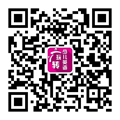双语揭秘:为什么我们一见萌物就hold不住

扫描关注少儿英语微信
 为什么我们一见萌物就hold不住
为什么我们一见萌物就hold不住
 为什么我们一见萌物就hold不住
为什么我们一见萌物就hold不住
Seeing something cute actually does bring out aggression in us, according to a paper presented at Society for Personality and Social Psychology's annual meeting in New Orleans last Friday。根据上周五在新奥尔良的“个性和社会心理学研究会”年会上的一份报告的说法,看见可爱的东西确实会让人变得更加有攻击性。
Researchers found 109 people to look at pictures of animals -- cute, funny and "neutral" photos of fluffy, fluffy puppies. The lucky participants then rated how they felt about the pictures: whether they agreed with the statement like "I just can't handle it!" , whether they made them want to squeeze something or whether they were suddenly seized with the impulse to say something like "grr!" The cuter the animal, the more aggressive the response。研究者给109个实验参加者分别看了不同的动物图片,其中有可爱的、有搞笑的,以及“一般”的毛茸茸的小狗。这些幸运的参与者们接着对照片给他们的感觉进行了评价,如“实在是可爱得受不了了!”这样的说法是否符合他们的感受;又如他们是否有想要捏东西的冲动、是否突然有喊“唔啊啊啊啊!”的冲动。结果显示:动物越可爱,人们的反应也越激烈。
The study's researchers, led by Rebecca Dyer, a graduate student in psychology at Yale University, dubs the phenomenon "cute aggression"。耶鲁大学心理学硕士Rebecca Dyer领导的研究团队把这种现象称为“可爱引发的攻击性”。
"We think it's about high positive-affect, an approach orientation and almost a sense of lost control," she said. It's so adorable, it drives you crazy。“我们认为,这种现象表现为高度积极的情绪、行动倾向,和一种几乎失控的感觉,”她说道。它太可爱了,可爱到让你发疯。
But for the sake of thoroughness, researchers did a second experiment to test whether the aggression was simply verbal, or whether people really did want to act out in response to wide-eyed kittens and cherubic babies. Volunteers were given bubble wrap and told they could pop as much of it as they wanted。不过为了确保实验的完整性,研究者又进行了第二个实验,测试人们看到大眼睛的猫咪和胖乎乎的宝宝时,他们表现出来攻击性是否会真的付诸行动,还是单单只是口头上的。研究者给了志愿者们一些外包装气泡膜,告诉他们随便挤破多少都可以。
When faced with a slideshow
of cute animals, people popped 120 bubbles, whereas people watching the funny and neutral slideshows popped 80 and 100 bubbles respectively。看了可爱动物幻灯片的志愿者挤破了120个泡泡,而看了搞笑的或者普通动物照片的人则分别平均挤破了80个和100个泡泡。
Dyer's suggests that one reason we have so much pent-up
aggression over cute pictures is that seeing something cute, like a baby, drives us to want to take care of it. But we can't reach through a photograph to cuddle it, so we get frustrated -- and then aggressive.Dyer的团队提出,看到像小宝宝这样可爱事物照片之所以会产生攻击性行为,这是因为人有想要照顾它们的冲动。但是光看照片我们并不能真的抱到可爱的东西,所以人会变得失落,进而变得有攻击性。
Another possibility is that it's just too much of a good thing -- sometimes we portray an onslaught
of positive emotion in a negative way, like when you're so happy you cry. Dyer speculates that giving positive emotions a negative spin might help us regulate that high energy。另外一种可能性是:好事过头反成坏事——有的时候我们会用消极地表现积极的情绪,如喜极而泣。Dyer推测到,用消极的方法表现积极情绪也许能帮助人控制过剩的精力。
So the next time an aunt moves in to pinch your cheeks, just think -- you can't help being cute. And if there are any follow up studies, I'd happily volunteer to look at some puppies -- kittens and bunnies are within my expertise, too。所以下次阿姨捏你脸的时候,你只要想:你实在是太可爱了,没办法。如果还有后续研究的话,我会很乐意去做志愿者,去看看小狗狗的照片,看猫咪和小兔的照片也是我的专长!
(来源:沪江英语)
- 双语揭秘:女性有了啤酒肚发生骨折几率小2015-09-08 11:08
- 经典双语美文:加油 为了心中的梦想(图)2015-09-08 10:27
- 德国动物园袋鼠出逃 狐狸野猪帮忙打洞(双语)2015-09-08 10:33
- 双语盘点:世界八大金字塔奇观震撼眼球2015-09-08 10:21
- 双语:世界各地教师节的由来知多少(图)2015-09-08 09:57

